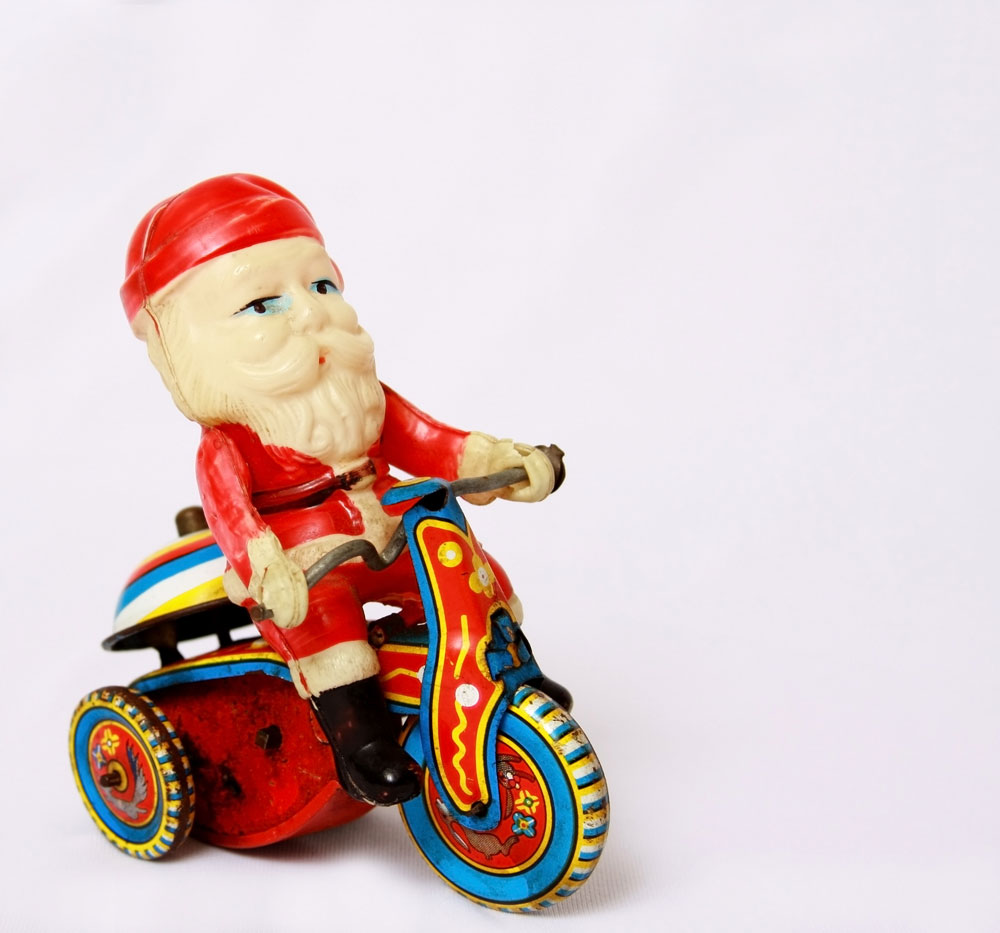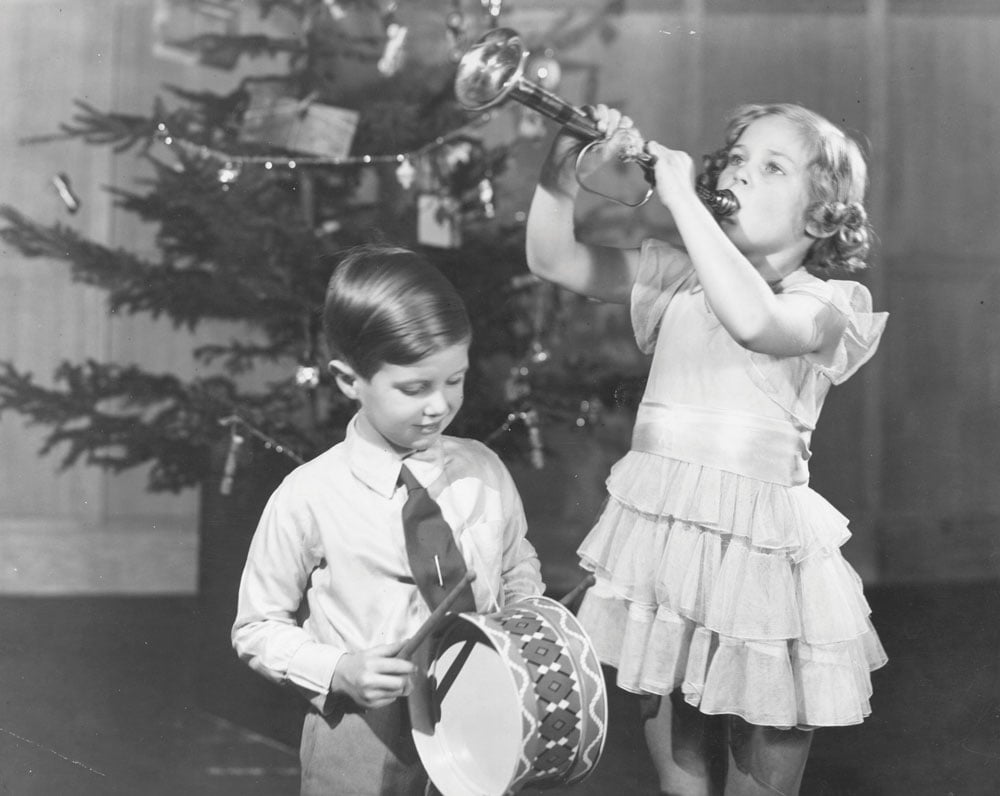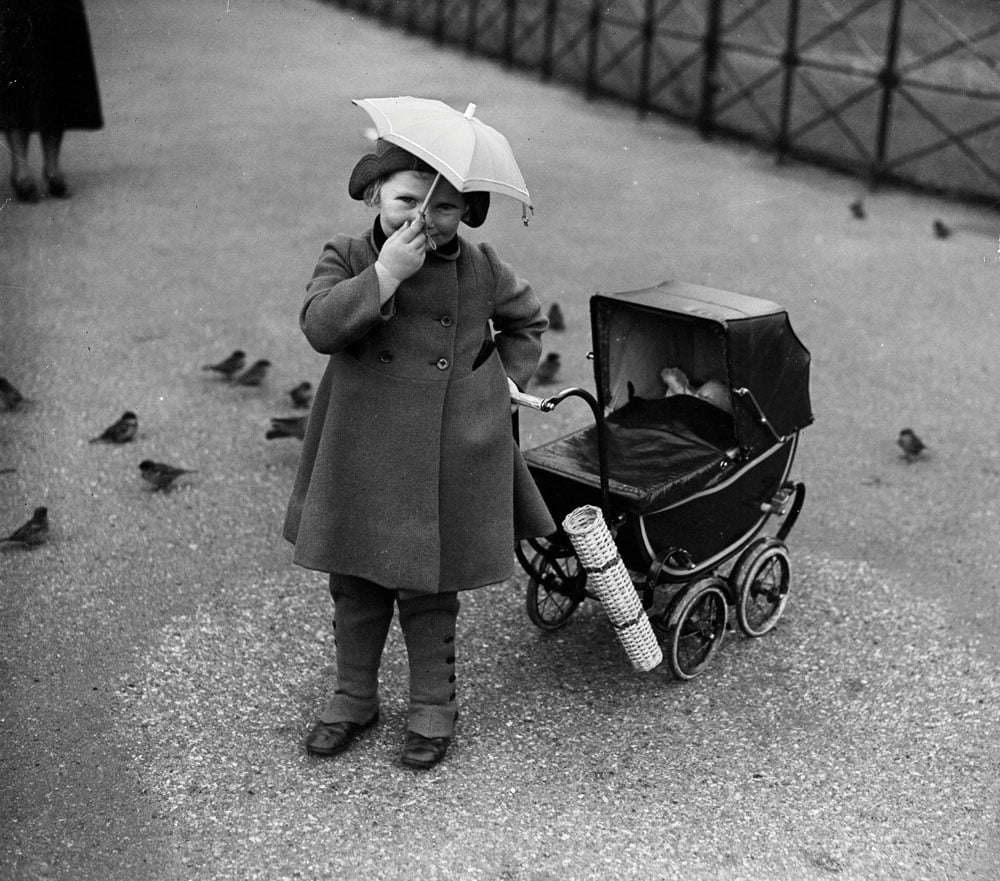1. Mix Dinner Guests Intelligently
The Courtaulds regularly had guests over for Christmas and other festivities at their home, Eltham Palace in Greenwich, London. This photo shows guests enjoying Christmas dinner in 1942.
Britannia and Eve magazine from the period commented that at Christmas it’s important to "Mix your guests intelligently at all costs. Don’t expect the loneliest young man to be quite happy without the assistance of some young woman, and vice versa… A sprinkling of children among the guests is excellent for the Christmas spirit. If they are a trifle boisterous, what of it? – this is the season of enjoyment."
2. SERVE CELERY SURPRISE AND SIDECARS
The Courtaulds were known for being generous with the food and drink they served at Eltham Palace.
A 1930s Christmas dinner contained a lot of dishes we still eat today. Turkey became the prominent centrepiece in the 1920s and 1930s, served with bread sauce, although goose was still popular. Unless you were wealthy like the Courtaulds, a fridge would have been a rarity, so turkeys would have been collected as close to Christmas as possible. They also would have cost the average person a week’s wages (in comparison, turkeys cost about two hours of today’s average wage). In aristocratic homes, turkey or goose might be one among many dishes served and the meal would often include a cold buffet alongside hot dishes.
Plum pudding was well established by the 1930s – the recipe for the Royal Christmas pudding was published in 1927 and included ingredients sourced from across the Empire, including ‘strong ale’. In upper class homes it might be served with other, lighter desserts. Brandy butter made its first appearance in the 1930s, as well as the custom of pouring alcohol into the Christmas pudding itself. Recipes from newspapers and magazines of the period list popular Christmas starters as tomato soup, lobster au gratin, orange salad and celery surprise (celery sticks served with a paste made from celery, cod’s roe, butter, lemon juice and pepper).
For the upper classes, cocktails were popular. The Strand newspaper from 1930 published Christmas cocktail recipes that included the sidecar (lemon juice, Cointreau and brandy), Champagne punch and eggnog.
1930s Christmas recipes
Much of today's festive food and drink was also popular in the 1930s. Download the recipes below to make your own tomato soup, plum pudding, brandy butter and eggnog.
3. BRING OUT THE BAUBLES
Real Christmas trees were still prevalent since their introduction to Britain in the 1830s, but the first bristle-style artificial tree was made by Addis Housewares Company in 1930 – using the same machinery it employed to make toilet brushes! Trees would generally be set up and decorated on Christmas Eve. Baubles were beginning to make an appearance, as were electronic fairy lights. Chalkware decorations were the must-have Christmas decoration of the period – moulded plaster decorated with water-based paint and then glossily varnished. For those on a budget, Woolworths was the place to go to find decorations, as nothing cost more than sixpence. Elaborate fold-out paper decorations were also fashionable in the early part of the decade.
MAKE YOUR OWN ANGEL GARLAND4. PLAY HUNT THE THIMBLE
Without televisions, other forms of entertainment would have been required to keep the guests entertained at Christmas. The Royal Christmas Message began in 1932, when George V made his first broadcast on the radio. It was listened to by 20 million people across the UK, Australia, Canada, Kenya, India and South Africa.
Parlour games such as Charades, Consequences and Hunt the Thimble would have been popular to play post dinner. Board games were also gaining popularity in the 1930s, such as Scrabble, Monopoly and mah-jongg – perhaps this was why the the Courtaulds’ beloved pet lemur was called Mah-Jongg!
5. Dress in your best
Britannia and Eve magazine from 1935 lists essential Christmas fashions as brightly coloured checks, caped coats and lightweight fur felt sports hats. Party dresses were draped at the bodice and gathered at the waist, made from fabrics such as broche, crepe and wool-satin mix.
The looks for children, according to The Sketch in 1931, included taffeta and chiffon ruffled dresses for girls, and frilled crêpe de Chine blouses and chiffon velvet knickers for boys.
6. WRAP UP A TRAIN SET
Toys that would have been found under the tree included trains, Meccano sets and soft toys. The children’s gift guide from The Bystander magazine in 1936 lists an aeroplane on wheels, a steam roller and a rocking horse as suitable presents. The Museum of Childhood notes that this was the first time that children were targeted with toys that were linked to films and celebrities they would have known about from radio and cinema. The first-ever Mickey Mouse soft toy was created in 1930, and Shirley Temple dolls were best-sellers.
Developmental toys to help children learn through play also made an appearance in this period. Kiddicraft experimented with plastic toys, while in 1930 the Premo Rubber Company launched Minibrix, which were rubber and moulded press stud blocks. Nylon was used for the first time in toys in 1938, with polyester also used following its invention in 1941.
You might also be interested in
-

Members' exclusive content
Discover more content exclusively for Members, including videos, downloads and backdated issues of the Members' Magazine.
-

Book tickets for Enchanted Eltham
Enjoy some winter festivities of a different kind as the gardens at Eltham Palace are transformed into an illuminated world during our Enchanted events.
-

Blog: How to host a 1930s Dinner Party
Read our blog for even more tips on how to entertain your guests drawing inspiration from the Courtaulds' parties at Eltham Palace.






























